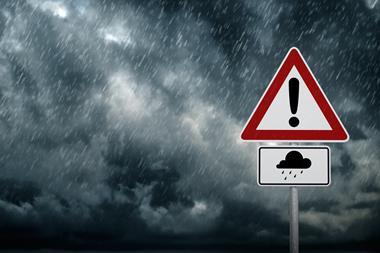The unfolding nuclear crisis in Japan, while worrying, is a classic example of the media hyping up a risk and causing more problems
The unraveling Japanese “nuclear crisis” (as most of the mass media terms it) is a classic example of how the world’s media can massively overhype a risk and cause even more problems in the process.
As I understand it (with information gleaned from a range of media) the situation with the Fukushima Daiichi nuclear plant is precarious but a full scale nuclear meltdown remains a remote risk. Reading the news headlines, though, you wouldn’t get that impression.
I could be wrong but I can't help thinking the risk of nuclear meltdown is being sexed up to sell a story.
Exclusive Analysis, a leading risk forecasting company, had the following to say: "The overwhelming balance of probabilities is that the release of nuclear material will remain confined to the release of moderately contaminated steam, which will likely persist for a matter of weeks or months. A worst case scenario would include some release of fissile material. However, this would not affect an area much wider than the official 12 mile exclusion zone. The worst case might involve the release of radioactive materials leading to iodine and caesium contamination."
According to a report from the International Atomic Energy Agency, Fukushima is a Level 4 event (on a scale of 1 to 7, see below). To put that in perspective, that is not quite as bad as the Three Mile Island accident in the US in 1979, which registered as a Level 5 event. The 1986 Chernobyl nuclear power plant accident in Ukraine was listed as a Level 7 event.
Furthermore a recent report by UN scientists revealed that only a few dozen people were killed as a result of Chernobyl.
As I write this the situation is that Japanese authorities are desperately trying to cool the overheating nuclear reactors, which were damaged by the earthquake on March 11. The damaged plant does appear to be leaking unhealthy levels of nuclear radiation, although Japanese authorities believe a full-scale meltdown is not likely.
Quoted in the Financial Times, Richard Wakeford of the Dalton Nuclear Institute in the UK warned how overplaying the risk could cause even bigger problems. “Words like ‘apocalypse’ and ‘catastrophe’ used about the situation at the Fukushima nuclear power plant are utterly inappropriate?.?.?. Such irresponsible statements could produce unnecessary panic and flight, leading to further loss of life.”
There are concerns that with relief efforts and attention being focused on the nuclear problem this could overshadow the plight of refugees and other victims of the earthquake and tsunami.
The way information is presented by the media is often deliberately confusing to make a story more compelling for readers.
Can you blame media organisations for trying to do their best to shift papers or sell a story? After all they are mostly commercial organisations. And a nuclear meltdown is an archetypal risk scenario that doesn’t come round that often. You can see how journalists might get excited by it.
“We live in a society where we have the right to clean water, but not clean information,” Professor Gerd Gigerenzer, director of the Max Planck Institute for Human Development told StrategicRISK recently.
Read more on risk perception and the media in the next issue of StrategicRISK.
International Nuclear Event Scale
Level 0 Below scale. No safety significance.
Level 1 Anomaly. Variation from permitted procedures.
Level 2 Incident with potential safety consequences on site but with sufficient safety defences remaining. Insignificant release of radioactivity off site.
Level 3 Serious incident. Very small release of radioactivity. Radiation exposure off site a fraction of the prescribed limits. Local protective measures unlikely except for some food monitoring and control. Possible acute health effects to a worker.
Level 4 Accident with minor release of radioactivity. Radiation exposure off site of the order of prescribed limits. Local protective measures unlikely except for some food monitoring and control. Significant plant damage. Fatal exposure of a worker.
Level 5 Accident with off site risks. Release of radioactivity. Severe plant damage. Partial implementation of local counter measures.
Level 6 Serious accident. Significant release of radioactivity. Full implementation of local counter measures.
Level 7 Major accident. Major release of radioactivity. Acute health and long-term environment effects.




















No comments yet